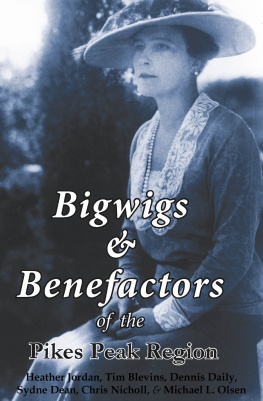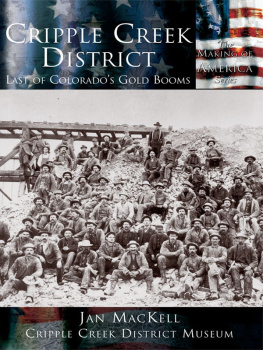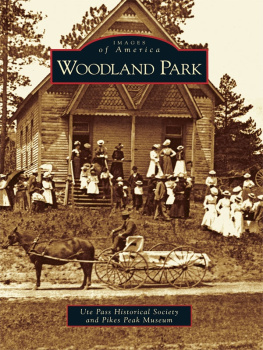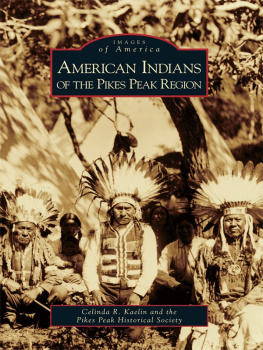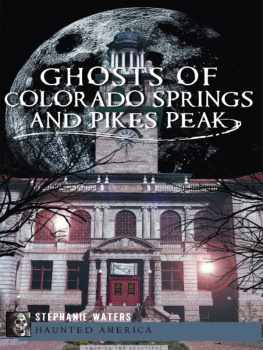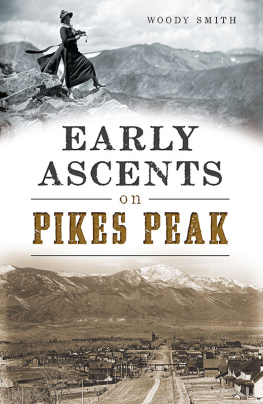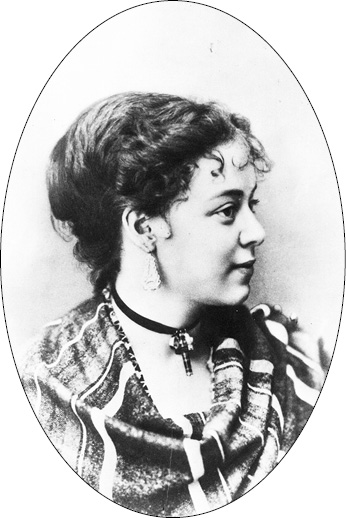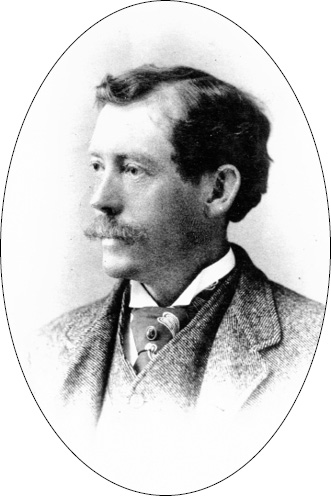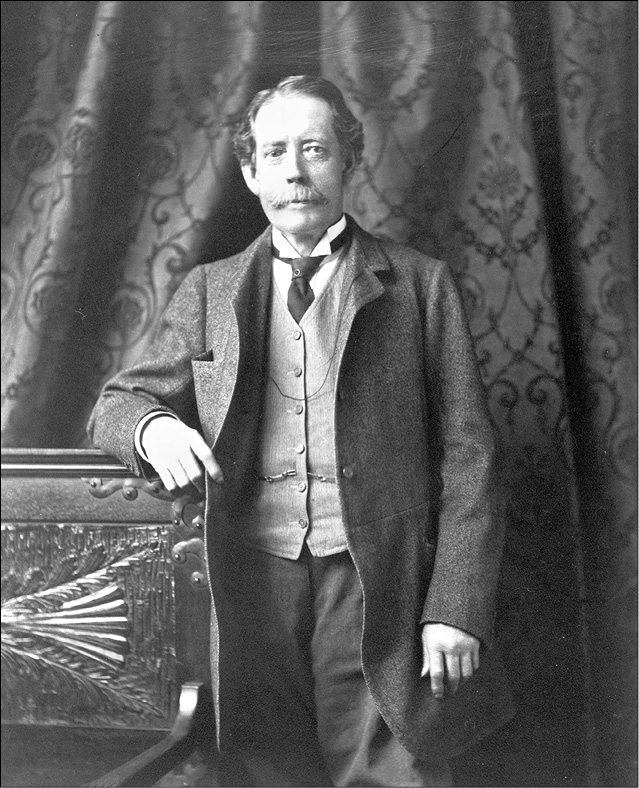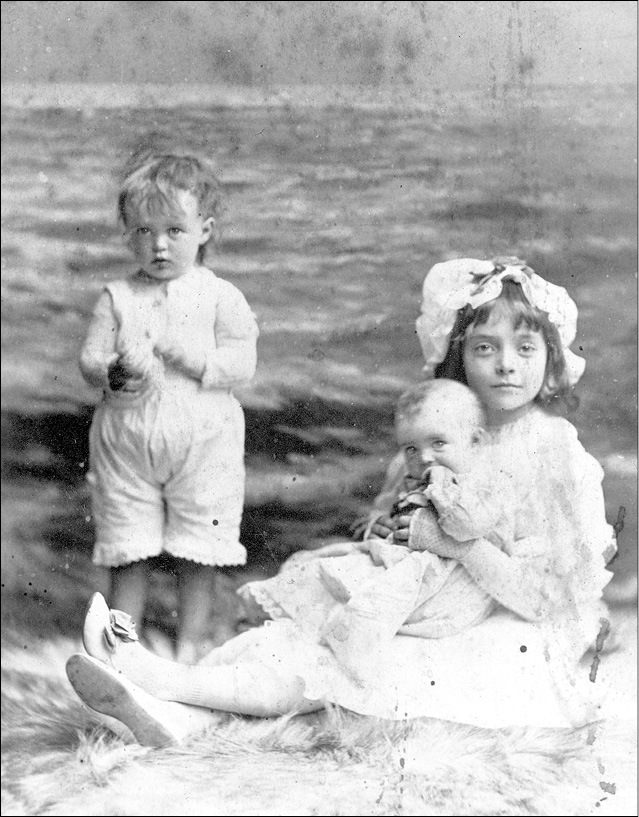Queen Palmer and Gen. William Jackson Palmer, Special Collections, Pikes Peak Library District (001367 & 001376)
General William Jackson & Queen Palmer:
In the Words of Henry James
Henry James
NOTE : This chapter is reprinted with only minor format and spelling revisions to the original version. Henry James to Grace Norton, Boston, January 4, 1888, in Henry James Letters, 18831895, ed. Leon Edel (Cambridge, MA: Belknap Press of Harvard University Press, 1980), 3:216217.
I have an idea that I meant to say something about a queerly, uncomfortable yet entertaining visit (of two days, my limit), which I paid at Christmas to a wonderful old mated house, six miles from Sevenoaks, in Kent, Ightham Mote by name, which is celebrated far and wide for its picturesqueness and actually tenanted by some Colorado Americans, one General Palmer, a Mexican-railway-man, and his wife and children. I didnt know them much, but they nevertheless secured me, and the episode was the drollest amalgam of American and Western characteristics (there were also several English people there), in the rarest old English settingwhich would have been rarer still, however, if the house, owned by an ancient race (the Selby-Biggs) which is so impoverished that they havent a penny to spend on chair legs or window fastenings, were not in a state of almost perilous decrepitude. Its swift blue moat flows around it, its central court is an untouched piece of the fourteenth century, and its old garden and pleasaunce must be altogether adorable in summer. I slept in a room with a ghost and an oubliette; but fortunately the former remained in the latter. The good General Palmer arrived from Mexico, with the mud of his railway-making still on his boots, only two days before, to find his spontaneous, loquacious and really charming wife, installed in a moated grange and giving a Christmas feast to seventy rustics, tenants of the Selby-Biggs, to whom she was under no obligation beyond what was suggested by her native and, I should suppose, characteristically Coloradoish, generosity. The landlords have so long been poor and parsimonious, that they (the lean tenants) hadnt, for generations, assisted pareille f te, and the episode was very entertaining and successful. Seventy people were accommodated in the great high-roofed dining hall, and with our backs to the Yule log, we carved dozens of roast beefs, turkeys and plum puddings. There was a band in the court, a Christmas tree afterward, and a dance, in costume, by the children of the house, and those of the guests (I mean of course those staying ones, who had brought their infants), and tea and speeches in the housekeepers room. The affair was organized, perfectly, by the village inn-keeper, in that competent, immediate way in which you can get everything of that kind done in Englandbut the ladys butler was an Italian boatman from the Lake of Como and her major-domo a helpless German-American governess from the Rocky Mountains. It was all a curious little example of modern cosmopolitanism; but the bewildering heterogeneousness and incoherency of such rapprochements weary my conservative sense.
Henry James (18431916) was an American-born British novelist and literary critic. His works include Daisy Miller (1878) , The Portrait of a Lady (1881) , The Turn of the Screw (1898), and The Wings of the Dove (1902).
.
Gen. William Jackson Palmer was a Civil War soldier, philanthropist, railroad tycoon, and founder of Colorado Springs. He married Mary Lincoln (Queen) Mellen in 1870. Palmer donated land for many Colorado Springs institutions including Cragmor Sanitarium, Colorado College, and the Colorado School for the Deaf and Blind. Special Collections, Pikes Peak Library District (005375) .
Palmer Girls, ca. 1882. Elsie Palmer, age nine and a half, holds six-month-old Marjory in her lap as Dorothy, age one and a half, stands nearby. Colorado Springs Pioneers Museum (S993.060.14).
The Palmer Daughters & Their Impact
On Colorado Springs
Susan Fletcher
When Gen. William Jackson Palmer, but the daughters were vitally important figures in Colorado Springs in several respects. Their relationship with their parents humanizes an otherwise legendary family, the girls served as benevolent celebrities in Colorado Springs, and they contributed generously to the well-being of the city in far-reaching ways.
The story of the Palmer girls informs our understanding of both William and Queen Palmer, and allows the humanity of the city founders to shine through the veil of myth. In his family correspondence, William, a man who tends to come off as an epic figure, suddenly seems a little bit more like a real person when he is caring about what time his daughters are going to bed and scolding them for spending too much money. The tender relationship that the girls had with Queen also does much to deepen our understanding of her own character and the values of kindness and philanthropy that she was transmitting to her children.
The daughters stories also inform our understanding of the extent of the familys social connections on an international scale. In addition to their local significance, the Palmers trod on a global stage. Throughout their lifetimes, all members of the family interacted with renowned bigwigs and influential figures in the arts, industry, and politics on both sides of the Atlantic. Elsies journal entries talk about her time observing John Singer Sargent while he was painting her portrait, about her fathers friend Andrew Carnegie, and her own friends in the British arts and literary scene.
Finally, the girls were significant as philanthropists in their own right. As young women they served as their fathers representatives in Colorado Springs and helped him oversee his many philanthropic ventures. As adults they contributed much towards the health and well-being of marginalized children and tubercular patients in Colorado Springs. After growing up observing their fathers philanthropic activity and concern for the people of Colorado Springs, the adult Palmer daughters carried out their own legacy of kindness and giving to others in need.
Just 15 months after the first stake for the Fountain Colony was driven, William and Queen had Elsie, their first baby, on October 30, 1872. Tiny Elsies infancy paralleled the early years of Colorado Springs. She grew up hearing stories about her fathers exploits during the Civil War and his surveys throughout Mexico and the West. She enjoyed rambles through the countryside with him. She later recalled,
Of these very early days perhaps the pleasantest of all my recollections is one of him and me going off alone together on a lovely summer day for a long walk. We spent hours lying in the soft grasses among the rocks of north Glen Eyrie, where the flowers were growing thickharebells, red penstemon, kinnikinnick, and painters brush. Our mood was a very happy one; we sang, we made up rhymes about the stealing of the hours that should have been spent in town.
While Elsie enjoyed a carefree childhood her sisters had very different experiences. The younger daughters were born under the shadow of Queens heart disease. Dorothy and Marjory never knew a day in their young lives when their mother was healthy and wellher illness shaped family dynamics for the majority of their childhood and early teenage years.

